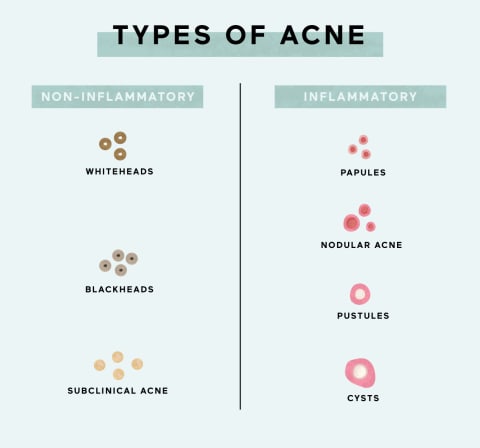Here, we dive into the seven types of acne, the causes, and how to best treat each spot. “Non-inflammatory” acne, on the other hand, results in subtler mounds—these are your whiteheads, blackheads, and subclinical breakouts. Also known as comedonal acne, the bumps tend to be flesh-toned (aside from blackheads, which are darker in color). It’s typically caused by clogged hair follicles and found where the skin is more oily, like the chest, back, and T-zone area of the face. Non-inflammatory acne can become inflamed later on when there is an overgrowth of bacteria (specifically Cutibacterium acnes1), which can cause the release of inflammatory cytokines and messengers to create clinical inflammation. So again, all acne is inflammation on some level. RELATED: 5 Ways To Get Rid Of Sebaceous Filaments, From Derms Now, whiteheads are not the large, tender zits with a big pus-filled center (those are pustules, which we’ll get into later). Rather, because whiteheads are not inflamed, they are much subtler. Think small, fleshy bumps on the skin, caused by dead skin, excess oil, and overall debris blocking the pores. In terms of appearance, nodules look like hard lesions that feel like lumps under the skin; and while they may be flesh-toned or red, they’re often pretty painful to the touch.




